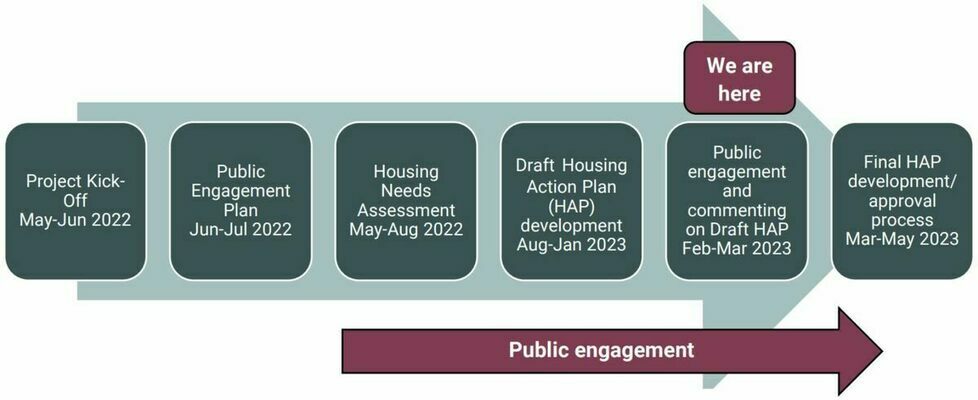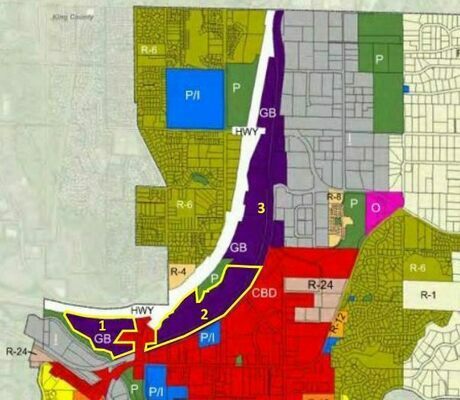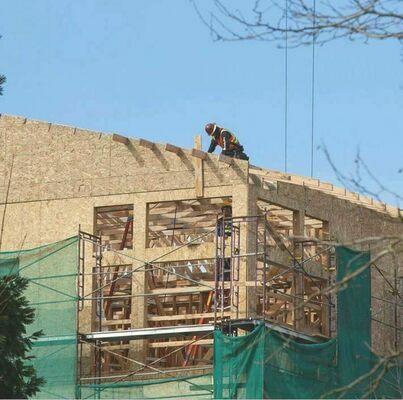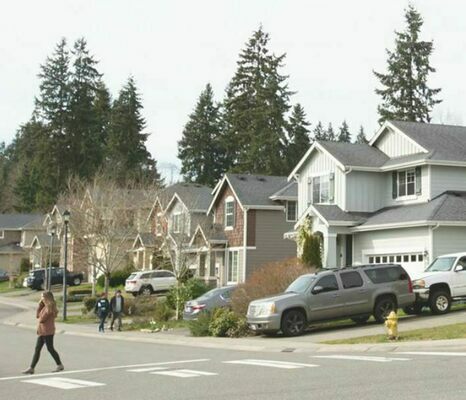Woodinville City Council narrows in on Housing Action Plan, seeks public input
The City of Woodinville is reaching an endgame in its monthslong effort to draft a Housing Action Plan (HAP) that will, if effective, incentivize developers to build more affordable and “missing middle” housing in the city.
In 2021, the Washington State Legislature amended the 1990 Growth Management Act (GMA) to require cities to “plan for and accommodate housing affordable to all economic segments.”
A draft of the Woodinville HAP released by the city states, “This puts a greater responsibility on local government to plan for housing for low- and moderate-income households. The HAP will assist in providing options to do this that the city can consider as part of the periodic update.”
The 2014-18 Comprehensive Housing Affordability Strategy (CHAS), conducted by the U.S. Department of Housing and Urban Development, found that 34% of Woodinville households were cost-burdened by housing costs, spending more than 30% of their income, and 16% were severely cost-burdened, spending more than half of their income.
The report notes that the city is not currently able to meet the demand for both owner- and renter-occupied households. In a healthy market, typically around 5-6% of houses are vacant. But in Woodinville, only 3.8% of renter-occupied and 0.5% of owner-occupied houses are vacant.
The report estimates that at least 104 housing units must be built per year by 2040 to meet the demands of the growing population.
It also states that housing prices have risen faster than incomes. The median rent in Woodinville increased by 72% between 2010 and 2020, but the median income of renter households only rose 55%.
The City of Woodinville and the Woodinville City Council have been drafting and debating the HAP for months and are narrowing in on a final report, which is to be released by June or earlier. Now, they seek public input.
“The city really wants to hear from everybody,” said Kevin O’Neill, assistant to the city manager for the City of Woodinville, in an interview with the Weekly. “We want to go into this with our eyes wide open. So everybody, from any walk of life, is encouraged to participate.”
Woodinville also became increasingly racially and ethnically diverse between 2010 and 2020, the report found. In that time, the portion of the population identifying as White, not Hispanic or Latino dropped from 76% to 66%. Asian and Hispanic or Latino populations grew substantially in that time, comprising 16% and 8.6% of the population in 2020. All other racial or ethnic group populations changed by under 3%.
In drafting the plan, PRR, Inc., a consulting team the city has been working with, conducted ten interviews with “nonprofit housing advocates, local builders and/or realtors, faith-based organizations, and general community groups,” the report reads.
Interviewees consistently brought up “the high cost of housing, gaps in housing, community engagement recommendations, equity.”
The city council discussed the HAP in its meeting on Feb. 7. Mayor Mike Millman, Deputy Mayor James Randolph and other councilmembers expressed that they are in favor of more homeownership opportunities for people of a wider range of income levels.
“Ownership opportunity means that you have some level of written control and you actually have an investment that will accrue over time, and something to pass on to the future,” Randolph said. “So I’m definitely a plus on ownership.”
Councilmember Rachel Best-Campbell concurred, and said that the city needs to somehow create more opportunities for individuals and families to buy houses, rather than LLCs that rent them out.
“If you have equity companies coming in and paying cash on the barrelhead for what's an affordable middle-class unit, it doesn't go into the hands of people,” she said. “You lose this sort of generational equity that you get when you get your foot on the rung of the ladder.”
Regarding affordable housing, councilmembers also discussed the possibility of adopting inclusionary zoning measures.
Seattle, Redmond, Kirkland, Issaquah and Shoreline each have inclusionary zoning policies. In Redmond, 10% of new dwellings must be affordable for households making 80% or less of the area median income (AMI).
Councilmember Sarah Arndt suggested the city take a “carrot and stick” approach to affordable housing. She posited that the city could implement minimum requirements, but also create incentives for developers to build affordable and higher density housing.
Regarding zoning density, the city has come out against policies by the Washington State Legislature that would apply minimum density zoning requirements throughout the state.
“We think that what might work for Seattle or Tacoma does not work for Woodinville,” Millman said in an interview with the Weekly. “So we are an advocate of building out the downtown and having local control and how we do that.”
On Feb. 15, Millman, Randolph and Arndt will travel to Olympia to lobby against statewide minimum density legislation.
“Generally speaking, there's an issue with housing in the entire region,” O’Neill said. “Both cost as well as just supply and the variety of housing available. Buying options, renting options, affordability, all of these things. So how can we, as little Woodinville, do a better job of providing housing options to those who are interested in living here?”
The city has released a survey and a form for public comments regarding the HAP on its website.
Please support The Woodinville Weekly by subscribing today!
You may also like:








